| Darlaston has many attractive and interesting
buildings which are survivors from it's fascinating
past. Unfortunately little is known about some of them
and so I am trying to gather information on such things
as when a building was built, the name of the architect,
and any special historic features or associations. I
have included photographs of the buildings in question
and also a little information about them. Any help will
be greatly appreciated as it adds to the story of the
town's past. If anyone has any information please
send me an email.
|
| Building 1. The
Columbarium. |
|
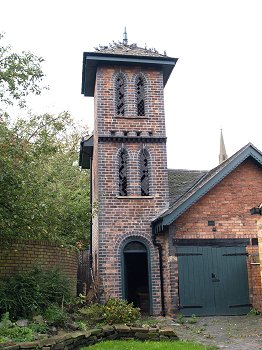
Courtesy of
Kevin McKeown. |
In the mid 19th century Samuel Mills ran one of the
largest iron and steel companies in South Staffordshire,
situated at Lower Green, Darlaston; where Heath Road is
today. The works covered more than 55 acres, and had
many furnaces, a vast metal processing complex, rolling
mills and several coal mines. The company called Bills
and Mills had a name for good quality iron. Samuel Mills
lived at Darlaston House, on the western end of what is
now Victoria Park. It also occupied the modern Rectory
Avenue, the Post Office, and the land behind Pardoe's
Cottage, where the Columbarium still stands. The
Columbarium was a dovecote, stables and coach house that
formed some of the outbuildings of Darlaston House.
Samuel and his wife Phoebe had 10 children, and two of
them, Martha and Jane, lived in the family's home after
their parent's death. Just before the end of the 19th
century they moved to Whitton near Ludlow and the house
was demolished. |
| Building 2. The Jane
Mills Institute. |
| Jane Mills, one of Samuel Mills' daughters lived at
Darlaston House. She was a public spirited lady who did
much for the town. She founded an institute in
connection with the Parish Church to help the needy
women and girls of the town. The building housed the
institute and was given to the town when Jane moved to
Whitton Court, Whitton, near Ludlow, in the late 1890s.
The institute, later known as the "Mothers Meeting and
Girl's Institute" eventually became a clinic and later
"The Sons of Rest". The building is now a family home. |
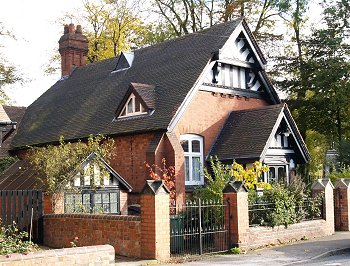 |
| Building 3.
Pardoe's Cottage. |
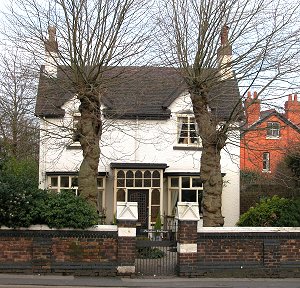 |
Pardoe's Cottage is a fine example of an 18th
century artisan's cottage. It is situated in Victoria
Road, that was named after Queen Victoria in 1887 to
celebrate her Golden Jubilee. Prior to this Victoria
Road was known as Pardoe's Lane and it's likely that the
cottage is named after the lane. |
| Building 4. The
Town Hall and it's Organ. |
| The Town Hall was built to celebrate Queen
Victoria's Golden Jubilee and opened on 31st October,
1888. It was an eventful day for the town, and many
celebrations were held. The building of a town hall was
long overdue. £2,000 had been raised for the project by
public subscription. The final cost of the building was
well over £7,000 and it would be some time before the
debt was paid. The building also included the town's
library and this was furnished by James Slater, the
Chairman of the Library Committee and Chairman of the
Local Board. |
 |
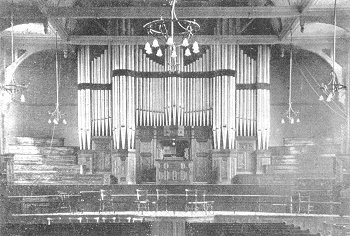
The Slater Memorial Organ
| In November 1903 after James Slater's death, his
widow presented the Slater Memorial Organ to the
Town Hall. |
| Building 5. The
Fire Station. |
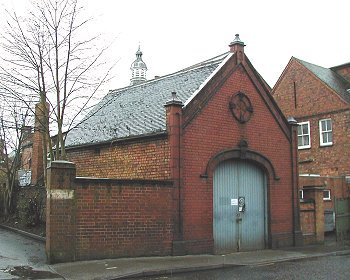 |
The fire station was built in 1896 at a cost of £90
to house Darlaston's first Fire Brigade. It originally
housed a horse-drawn hand pump and acquired it's first
motorised fire engine in the late 1920s. |
| Building 6. The
Police Station. |
| The Police Station in Crescent Road dates from
around 1899 and replaced the town's original police
station at 25 Church Street. The land at Crescent Road
was previously a mining site with three mine shafts and
sold for just £7. |
 |
 |
| Return to
the Darlaston Menu |
|